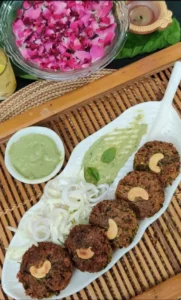Cooking a delectable beef brisket takes patience, but the result is certainly worth the effort. I’ve learned through experience that the secret to a perfectly tender brisket lies in a few key steps: selecting quality meat, seasoning properly, cooking low and slow, and knowing when to slice. Let me share the techniques I’ve honed to prepare the best brisket you’ll ever taste.

First, choose your brisket wisely. Look for a well-marbled piece of beef, ideally with a good fat cap on one side. The marbling — the white flecks of fat within the meat — provides flavor and helps keep the brisket moist during cooking. Depending on your preference, you can opt for a flat cut, which is leaner, or a point cut, which is fattier and juicier. I prefer the point for its flavor and tenderness.
Next, it’s time to season. I like to create a simple rub using salt, black pepper, and a touch of paprika for color. For a little extra flavor, I often add garlic powder and onion powder. Generously coat the brisket on all sides. I usually let it sit in the refrigerator for a few hours or even overnight to help the flavors penetrate the meat.
The next step involves cooking, and I find that slow cooking is the way to go. Whether you use a smoker, oven, or slow cooker, the key is to maintain a low temperature. For smoking, aim for around 225°F. If you’re using an oven, I recommend a similar temperature. I often cook my brisket for about 1 to 1.5 hours per pound. Patience is important here — cooking it slowly allows the collagen in the meat to break down, resulting in that incredible tenderness we all crave.
As the brisket cooks, you may want to spritz it with a mixture of water and apple cider vinegar every hour or so. This step helps keep the meat moist and enhances the flavor. I’ve found that using a meat thermometer is invaluable. Target an internal temperature of 195°F to 205°F, which ensures it’s tender enough to slice easily.
Once your brisket has reached the perfect temperature, don’t rush to cut into it. Allow it to rest for at least 30 minutes. Resting is important, as it allows the juices to redistribute throughout the meat, making every bite tender and flavorful. I typically tent my brisket with aluminum foil during this time.
When you’re ready to slice, be sure to cut against the grain. Look closely at the meat to identify the direction of the fibers and cut perpendicular to them. This method will ensure each slice remains tender. You can serve it with your favorite sides or even use the leftovers for sandwiches.
In the final account, cooking a perfect beef brisket requires quality meat, a flavorful rub, low and slow cooking, and a little resting time. Following these steps, you’ll have a succulent brisket that will impress anyone at your dinner table.

How to Cook Perfectly Tender Beef Brisket
Ingredients
- 4 lbs beef brisket
- 2 tablespoons olive oil
- 2 tablespoons kosher salt
- 1 tablespoon black pepper
- 1 tablespoon garlic powder
- 1 tablespoon onion powder
- 1 tablespoon smoked paprika
- 1 cup beef broth
- 1/2 cup apple cider vinegar
- 1 tablespoon Worcestershire sauce
Instructions
- Preheat your oven to 300°F (150°C).
- In a small bowl, mix together the salt, pepper, garlic powder, onion powder, and smoked paprika.
- Rub the spice mixture all over the brisket, ensuring it is evenly coated.
- In a large oven-safe pot, heat the olive oil over medium-high heat. Sear the brisket on both sides until browned, about 4-5 minutes per side.
- Remove the brisket from the pot and set it aside. Add the beef broth, apple cider vinegar, and Worcestershire sauce to the pot, scraping up any browned bits.
- Return the brisket to the pot, cover it with a lid or aluminum foil, and place it in the preheated oven.
- Cook for about 4-5 hours, or until the brisket is fork-tender.
- Once cooked, remove the brisket from the oven and let it rest for at least 20 minutes before slicing against the grain.




Leave a Reply